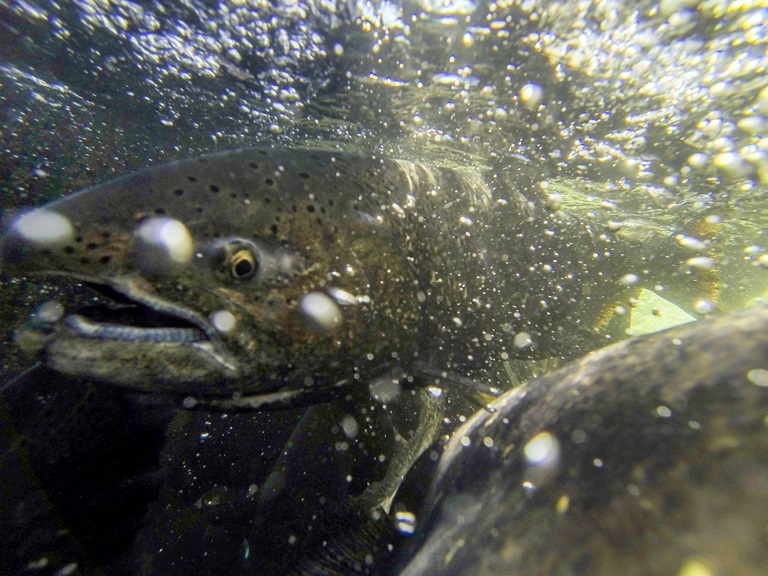Special Counting Tools for Spring-run Chinook Salmon
Salmon make their way up the fish ladder at the Feather River Fish Hatchery. Photo taken September 28, 2013.
In California’s Central Valley, spring-run Chinook salmon are a threatened species. To support recovery efforts of spring-run and to track their progress, it’s crucial for state agencies like the Department of Water Resources (DWR) to know how many juveniles are produced in the Central Valley’s rivers each year.
Adult spring-run Chinook salmon spawn and produce juveniles in at least seven different tributaries of the Sacramento River. These tributaries enter the Sacramento River at locations stretching from near Sacramento all the way up past Red Bluff.
“One of the things all these juvenile salmon have in common is they have to pass down the mainstem Sacramento River near its entrance to the Delta on their way to the ocean,” said Brett Harvey, DWR environmental program manager.
This area serves as a choke point that provides a location to count the total production exiting the Sacramento River system. As part of a recent initiative to count the total number of spring-run Chinook salmon produced in the Sacramento River each year, DWR requested and funded a project by the California Department of Fish and Wildlife (CDFW) to install and operate a new experimental rotary screw trap monitoring station at this location.
Rotary screw traps are eight-foot cone-shaped funnels, which are suspended in rivers between two pontoons so that the mouth of the funnel faces the onrushing current.
“Screw traps are great for capturing juvenile salmon,” said Rebecca Stark, CDFW environmental scientist. “The juveniles are really small, and they are still moving with the current. So, with the traps in the current we’re then able to get a count of what is moving through the system.”
After the juveniles are trapped and counted, they are released to continue their journey. Although only a portion of the salmon migrating to the ocean are captured, these counts can be used to estimate the total number of salmon passing the trap location. Information provided by this new monitoring station not only serves as a finger on the pulse of the threatened population, but also provides a new means to fine-tune water management to make spring-run outmigration more successful.
Watch our video to see the screw traps in action.
